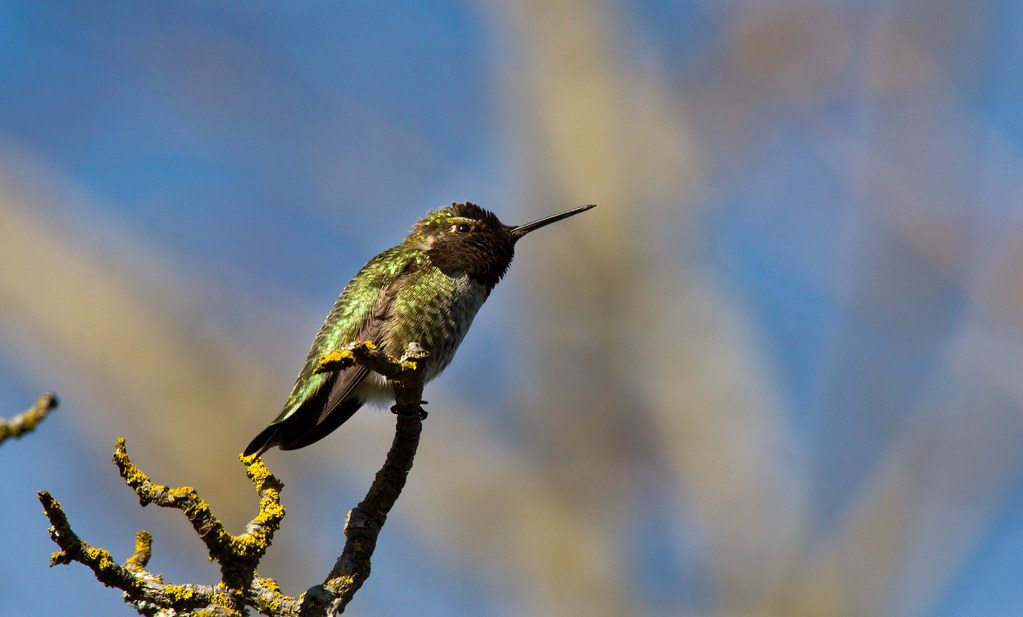Anna’s hummingbird (Calypte anna) is a dazzling North American bird named after Anna Masséna, Duchess of Rivoli. This vibrant species lives in the western coastal regions of North America, including parts of Arizona.
Facts About Anna’s Hummingbird
- Scientific Name: Calypte anna
- Named After: Anna Masséna, Duchess of Rivoli
- Native Range: Western coastal regions of North America, including Southern California and Baja California
- Expanded Range: Includes Arizona due to urbanization and climate changes
Subspecies Details
Anna’s hummingbird is monotypic, meaning there are no recognized subspecies. It was first described in 1829 by French naturalist René Lesson.
Size: Weight and Length
These birds measure about 3.9 to 4.3 inches (9.9 to 10.9 cm) in length, with a wingspan of approximately 4.7 inches (12 cm). Their weight ranges between 0.1 to 0.2 ounces (2.8 to 5.7 grams).
Appearance and Features
Male vs Female:
- Male: Iridescent crimson-red crown and gorget that can appear dull without direct sunlight; dark forked tail.
- Female/Juvenile Males: Dull green crown, grey throat with or without some red iridescence; grey chest and belly; dark rounded tail with white tips on outer feathers.
The male’s striking coloration is due to melanosomes in the feather barbules reflecting light like partially-opened Venetian blinds.
Where the Bird Lives: Always Including Arizona Locations
Anna’s hummingbirds are found along the western coast from southern Canada through northern Baja California, extending inland to southern and central Arizona.
Habitat: The Kind of Landscape
These birds thrive in open woodlands, shrubby areas, and mountain meadows along the Pacific coast from British Columbia to Arizona.
Diet and Eating Habits
Anna’s hummingbirds feed on nectar using their long, extendable tongues but also consume small insects caught mid-flight or gleaned off vegetation.
Foraging Behavior:
They capture flying insects or even eat spiders trapped in webs while sometimes consuming sap from trees as well.
Migration Habits
While they tend to be permanent residents within their range—including parts of Arizona—some have been spotted far outside their usual habitats, such as Alaska or New York, during colder months.
Conservation Status and Threats
According to a 2021 estimate by the IUCN Red List, around eight million Anna’s hummingbirds are classified as “Least Concern.” Their population has been increasing since the 1970s despite environmental changes negatively impacting other species.

